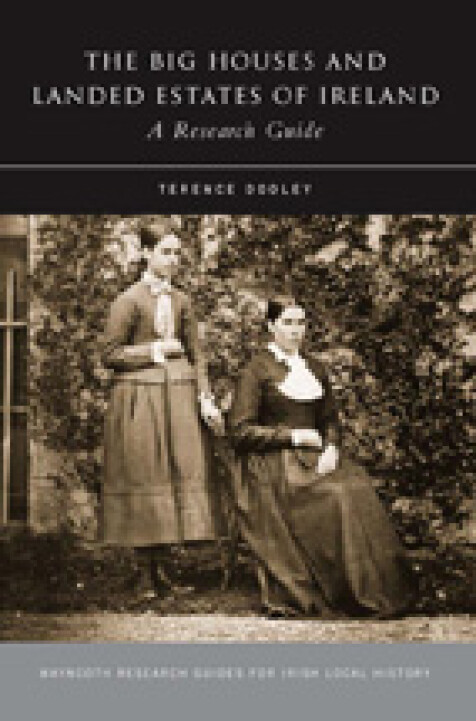The big houses and landed estates of Ireland
A research guide
Terence Dooley
‘Everyone who is interested in local history will be interested in The Big Houses and Landed Estates of Ireland, Terence Dooley’s research guide, which is packed with practical advice regarding the availability of primary sources, their locations, their strengths and their weaknesses', Arminta Wallace, Irish Times Weekend Review.
‘This Maynooth research guide sets out clearly where to find out about any particular big house, who has the records and archives, and which libraries and institutions to consult', Books Ireland.
'[Dooley's] latest book successfully expands his previous research guide to include material relating to the social, economic and art historical background to the big house itself …. Written in a matter-of-fact style, the book explains the background to the available historical records, outlining the purpose of the records that were kept, their state of preservation and their present whereabouts', Dr Andrew Tierney, Irish Arts Review.
‘Valuable not only to researchers, but to all who are interested in the history of rural Ireland’, DLC, Dublin Historical Record.
‘This book is a most useful source for any researcher interested in the history of landed estates in Ireland and the big houses that were a feature of most of these estates. Terence Dooley is a well known expert in this field, having written a number of books on the subject.’ Brigid Clesham, Journal of the Galway Archaeological and Historical Society (2008).
‘[This book], like those previously published as part of the Maynooth Research Guides for Irish Local History, provide invaluable detail and guidance to historical researchers about accessing, utilising and evaluating specific bodies of source material. The expertise of the authors of these guides in identifying and outlining in a succinct and insightful manner the content, usefulness and shortcomings of these important collections can come only from those with personal experience of using this material over a number of years … [this book is] very useful to the student new to this aspect of Irish history and to those who may wish to establish an interest in the topic … of prime importance here are the collections of estate records, compiled by the landlords and their employees … Terence Dooley has done much in establishing the study of the big house and landed estate firmly within contemporary Irish historical research and in advancing our understanding and appreciation of these important components of Ireland’s landscape and society … what emerges from these [Guides] is the enthusiasm and passion that each author has for the use of the respective bodies of source material they examine. The insights offered by each author into the potential of these sources are encouraging for researchers beginning their own studies. Both the historian of long years and those new to the discipline will glean a lot of pertinent information and guidance from these books and from this series of publications generally', Jonathan Cherry, Irish Economic and Social History (2009).

